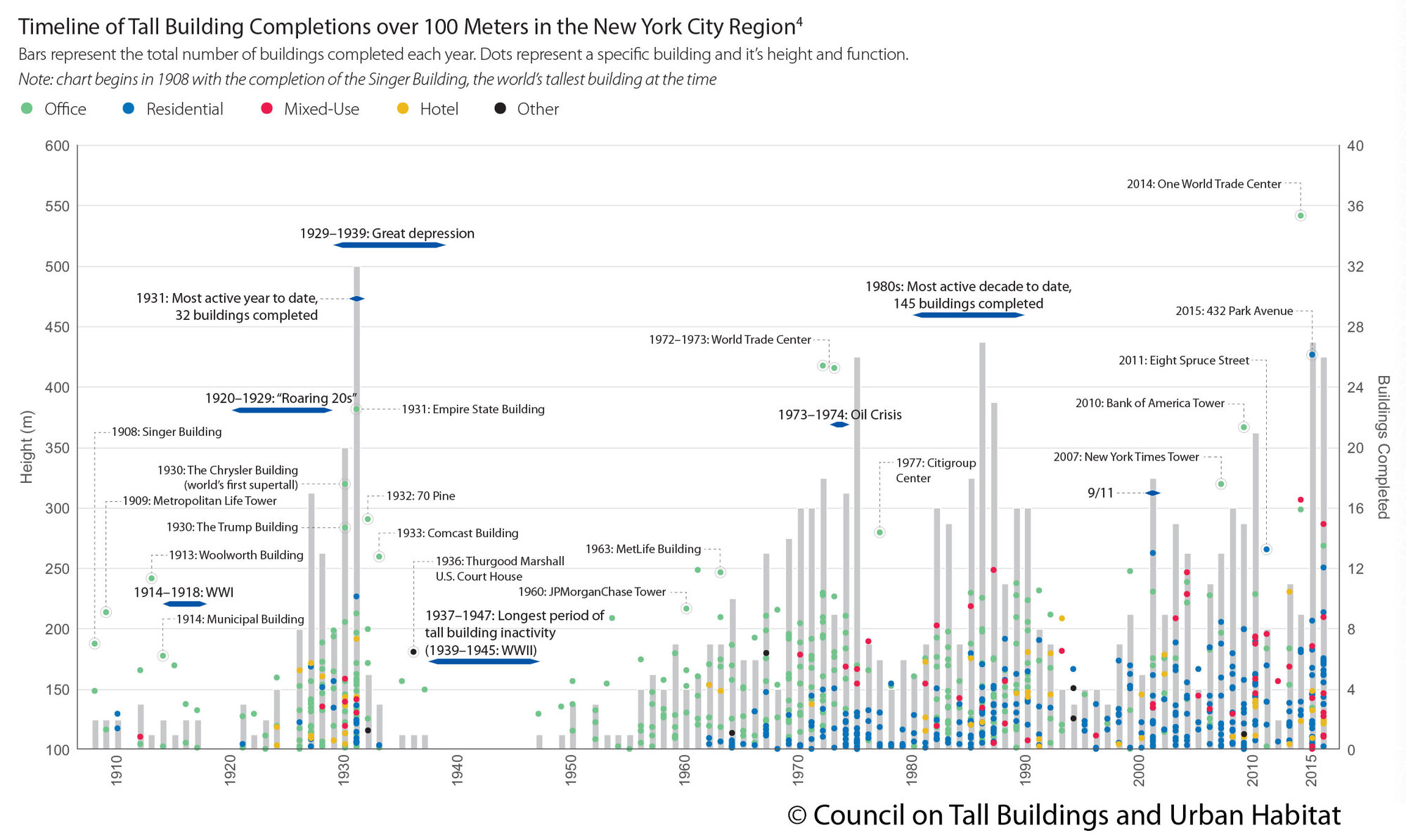With almost 30,000 new units coming to the market by 2020, it’s easy to forget that the vast majority of buildings in NYC are actually pretty old.

The last 20 years have been overwhelmingly represented by very big new developments in both the Residential and Commercial spaces. The Central Park South (Billionaires Row) corridor, Long Island City, and Hudson Yards area are a few notable examples, but this trend has been prevalent throughout the city. However, despite this massive boom in residential unit and office suite supply, it’s actually represented by a (relatively) small amount of new buildings. It’s the era of the supertall (again).
Given this recent boom, we thought it would be interesting to look back in time to see how old our building stock really is. The results are pretty straightforward, and as you can see from the chart above, new buildings peaked around WWI and WWII, and slowly declined over the years. The 20’s, 30’s, and 40’s were mostly low-rise multi-family buildings, with the exception of some really famous Midtown and Downtown buildings, and from the 30’s to the 60’s we also see the prevalence of government housing (projects), typically slightly taller structures.

By the 70s the city starts rising again. Supertall buildings in Midtown and Downtown buildings start sprouting like mushrooms, and the beginning of the trend we see today starts becomes apparent. The early 80’s were a bit of a lull, but the early 90’s were marked by many tall buildings. Given that the new building count is pretty flat during this entire period, we can only assume that there were a lot of Single-Family and Multi-Family buildings built in the outer boroughs during that time.
Bloomberg’s tenure was also represented by a building boom – arguably the largest since the early 90’s. Bloomberg (as well as Amanda M. Burden, director of the Department of City Planning) was responsible for rezoning huge parts of NYC (almost 40% of the city), as well as allowing, for the first time, supertall building to cast a shadow onto most of Central Park. New York added some 40,000 buildings during his tenure, representing more than 170,000 new housing units.

Given the fairly universal consensus that we’re approaching a downturn in the market (arguably it has already started), it’s likely that we won’t see another boom in the near future. For better or for worse, The NYC skyline, as it stands right now, is likely here to stay for at least a little while.